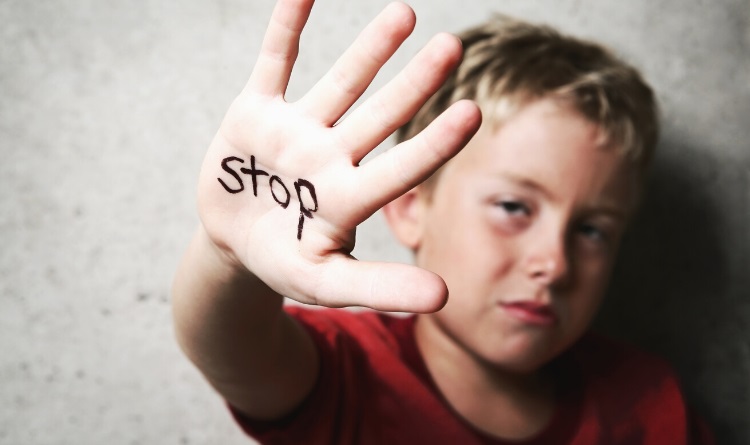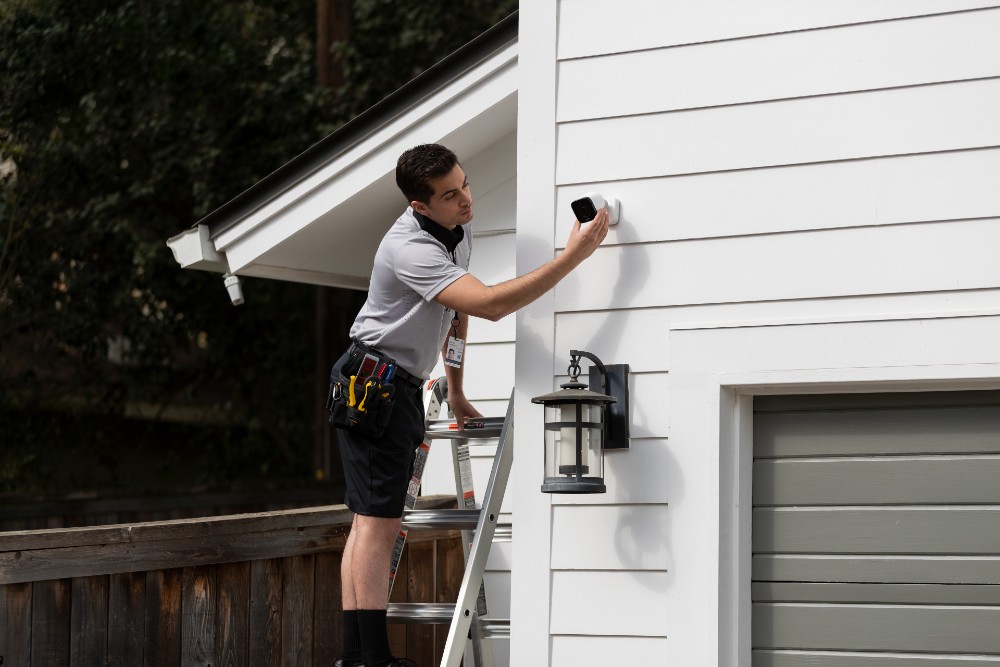Contents
- 1 Understanding Domestic Violence and Child Abuse
- 2 Understanding the Causes
- 3 Building Healthy Relationships
- 4 Seeking Help
- 5 Nurturing Children in Safe Environments
- 6 Raising Awareness through Education Programs
- 7 Supporting Local Organizations
- 8 Social Media: A Platform For Awareness
- 9 Conclusion
- 10 Conclusion: Reducing the Risk of Domestic Violence and Child Abuse
Understanding Domestic Violence and Child Abuse
Domestic violence and child abuse are two of the most pressing issues that we face today. Domestic violence is defined as any type of abuse between two people in a close relationship, whether it be physical, emotional, financial or sexual.
It can occur between partners or family members, and affects people of all ages, races and genders. Child abuse is any action by an adult that harms or threatens to harm a child’s safety, health or wellbeing.
It can take many forms including physical abuse, neglect, emotional abuse and sexual assault. The importance of reducing the risk of domestic violence and child abuse cannot be overstated.
These acts are extremely damaging to those affected by them and often have long-lasting effects on their mental health, relationships and overall wellbeing. Additionally, domestic violence has been shown to have a significant impact on society as a whole with increased healthcare costs for victims as well as criminal justice expenses.
It’s important to note that anyone can experience domestic violence or child abuse – it doesn’t discriminate based on age, race or gender. While it may be difficult for some individuals to recognize when they are being abused or when their actions are abusive towards others – understanding the warning signs is essential to addressing these issues effectively.
Throughout this article we’ll explore what causes domestic violence and child abuse so that you can learn how you can best protect yourself from becoming involved in these situations. We’ll also provide guidance on how you can identify early warning signs so that you may seek support before things become worse – both for yourself as well as those around you who might need help too.
Understanding the Causes
Domestic violence and child abuse are complex and multi-faceted issues that can stem from a variety of factors. Understanding these factors is crucial in reducing the risk of these types of abuse.
Factors that Contribute to Domestic Violence
Domestic violence can be caused by a number of factors, including:
- Substance abuse: alcohol and drug use can often lead to increased aggression and violent behavior.
- Mental illness: individuals with certain mental illnesses may be more prone to abusive behavior, particularly if they are not receiving proper treatment.
- Cultural beliefs: in some cultures, gender roles and expectations may contribute to domestic violence.
- Economic stress: financial difficulties can lead to tension within households, which can turn violent.
This list is by no means exhaustive, but it highlights some of the most common contributing factors that may lead to domestic violence. It’s important to remember that there is no single cause for this type of abuse, as each situation is unique.
Identifying Warning Signs
In order to prevent domestic violence from occurring or escalating, it’s important to recognize warning signs early on. These signs may include:
- Frequent arguments or fights: even if they don’t escalate into physical altercations, frequent arguments can be indicative of an unhealthy relationship.
- Demeanor changes in the abuser or victim: mood swings or changes in behavior could be warning signs that something is wrong within a household.
- Tension between partners: this could manifest as one partner attempting to control the other’s behavior or limiting their access to friends, family, or financial resources.
- Isolation: an abuser may attempt to isolate their victim from others in order to maintain control.
Again, this list is not exhaustive and each situation is unique. However, recognizing these warning signs can be a crucial first step in preventing domestic violence.
Building Healthy Relationships
Communication skills for conflict resolution
One of the most important keys to a healthy relationship is effective communication. When conflicts arise, it’s important to have the skills to resolve them in a respectful and productive manner. This can mean actively listening to your partner, expressing your own needs and feelings clearly, and finding solutions that work for both parties involved.
Practicing active listening involves giving your partner your full attention when they’re speaking, asking clarifying questions if necessary, and acknowledging their feelings. It’s also important to express yourself clearly and directly without being aggressive or dismissive towards your partner.
Using “I” statements instead of “you” statements can help keep the conversation focused on your own experiences instead of escalating into blaming or accusing. When disagreements arise, it’s helpful to remember that you’re both working towards a common goal – a healthy relationship.
This means finding solutions that work for both parties involved rather than trying to “win” the argument. Compromise is key in any relationship.
Establishing boundaries
Another important aspect of building healthy relationships is establishing clear boundaries. Boundaries are guidelines that help define what is acceptable behavior between partners. Setting boundaries involves identifying what you are comfortable with and what you are not comfortable with in terms of physical touch, emotional discussions, time spent together etc. Communicating these boundaries clearly with your partner can help ensure that they understand how you feel and can respect those limits.
It’s also important to be willing to respect your partner’s boundaries as well. If they tell you something makes them uncomfortable or ask you not do something specific, it’s crucial that you listen and adjust accordingly.
Cultivating empathy and respect
Empathy is the ability to understand another person’s experience from their perspective by putting ourselves in their shoes. Cultivating empathy allows us not only to understand our partner’s needs, but also to respond to them with kindness and compassion.
Respect is another essential element in a healthy relationship. This means treating your partner with kindness, care, and consideration at all times.
Respecting your partner’s boundaries and feelings shows that you value them as a person. By practicing empathy and respect towards each other in the relationship, both parties are more likely to feel valued and appreciated.
This helps foster a positive environment where both people feel safe, happy, and secure. building healthy relationships involves effective communication skills for conflict resolution such as active listening skills; establishing clear boundaries to ensure comfort levels; cultivating empathy allows both partners understand each other’s perspective leading to compassion; respect towards each other promotes positive relationships.
Seeking Help
Domestic violence and child abuse can be incredibly isolating, making it difficult for victims to seek help. However, seeking help is crucial in reducing the risk of further harm and creating a safe environment. There are several options available for those who need assistance.
Hotlines, counseling, and support groups
One important resource is hotlines that offer confidential support from trained professionals who can offer guidance and point individuals towards helpful resources. Many communities also offer counseling services or support groups for survivors of domestic violence and child abuse. These resources provide a safe space to discuss experiences, process emotions, and learn about coping strategies.
Reporting abusive behavior to authorities
It’s important to know that abusive behavior is illegal and should be reported to authorities. This includes physical violence, emotional abuse, sexual assault or harassment. If you suspect someone is being abused or neglected – especially children – it’s your legal obligation to report it immediately.
Remember that reporting this type of behavior can prevent further harm. If you are unsure where to report abuse or neglect in your community or state, consider reaching out to a local hotline or law enforcement agency for guidance.
Creating a safety plan
Creating a safety plan can also be an essential step towards reducing the risk of domestic violence and child abuse. This involves developing a strategy with supportive people in your life (such as friends or family members) on how you will leave an unsafe situation if necessary.
A safety plan may include details such as where you will go if you need to leave quickly (such as staying with friends or family), how you will contact law enforcement if needed (such as having their phone number programmed into your phone), what items you will take with you when leaving home quickly (such as identification documents), and more. Remember that creating a safety plan doesn’t mean that abuse will happen – it’s simply a precautionary measure that can help you feel more prepared and in control if an unsafe situation arises.
Nurturing Children in Safe Environments
Providing a Nurturing Environment at Home
When it comes to reducing the risk of child abuse at home, one of the most important things that parents can do is to create a nurturing and safe environment for their children. This means providing them with basic necessities such as food, shelter, and clothing, as well as emotional support and guidance. When children feel loved and cared for, they are less likely to become victims of abuse.
Parents can also create a nurturing environment by establishing routines and rules at home. This helps children feel secure and gives them a sense of structure.
For example, setting regular meal times or bedtimes can help kids feel like they know what to expect each day. Additionally, parents should model healthy behaviors such as expressing emotions in appropriate ways or resolving conflicts calmly.
Teaching Children about Healthy Relationships and Boundaries
Another important way to reduce the risk of child abuse is by teaching children about healthy relationships and boundaries. Parents should start early by teaching their kids how to treat others with respect and kindness. They should also talk openly about boundaries – both physical and emotional – so that children understand what behavior is okay or not okay.
Parents can use everyday situations as opportunities to teach their children about boundaries. For instance, if a child does not want to hug someone goodbye, it’s important for parents to respect that decision rather than forcing them into physical contact.
Parents should also talk openly about issues like consent so that kids understand that it’s important for people to be able to say “no” when they don’t want something.
Encouraging Children to Speak Up About Any Concerns Finally, it’s crucial for parents to encourage their children to speak up if they ever have concerns or questions related to abusive behavior. Kids need to know that they can come to their parents with anything without fear of punishment or shame.
Parents can create open lines of communication by actively listening to what their children have to say and engaging with them in conversation on a regular basis. They should also let their kids know that if they ever feel uncomfortable or unsafe, they should reach out to a trusted adult, such as a teacher, coach, or family friend.
By providing a nurturing environment at home, teaching children about healthy relationships and boundaries, and encouraging them to speak up about any concerns they might have related to domestic violence or child abuse can help reduce the risk of abuse. Parents play an essential role in protecting their children from harm, and by taking proactive steps like these, they can create safe and loving homes where kids can thrive.
Raising Awareness through Education Programs
One of the most important ways to reduce the risk of domestic violence and child abuse is by educating people about the warning signs and offering resources for help. This can be done through education programs in schools, community centers, and other public places.
By providing information on what domestic violence and child abuse look like, how to spot it, and where to get help, we can empower people to take action. When creating education programs, it’s important to tailor the content to different age groups and demographics.
For example, a program for teenagers might focus on healthy relationships and how to recognize red flags in a partner’s behavior. A program for parents might offer tips on how to talk with their children about healthy boundaries and safety plans.
It’s also crucial that education programs are accessible to everyone. This means providing materials in multiple languages, offering transportation or childcare services for those who need it, and ensuring that there are no barriers preventing people from attending.
Supporting Local Organizations
There are many organizations that work towards preventing domestic violence and child abuse at a local level. These organizations provide counseling services for victims of abuse, host awareness events in the community, advocate for policy changes that protect victims’ rights, and more. One way you can support these organizations is by making donations or volunteering your time.
Even small contributions can make a big difference in helping them achieve their goals. You could also participate in fundraising events or spread awareness through social media.
It’s important to research local organizations before donating or volunteering so you know exactly where your contributions are going. Look into their mission statement, past successes or challenges they’ve faced while working towards their goal of reducing domestic violence and child abuse.
Social Media: A Platform For Awareness
Social media platforms such as Facebook,Twitter , Instagram , Youtube etc., offer powerful tools for raising awareness about domestic violence and child abuse. By sharing information, statistics, and stories about abuse on these platforms, we can reach a wider audience and encourage people to take action. Hashtags like #domesticviolenceawareness and #stopchildabuse can help build momentum around this issue online.
You can also share posts from local organizations that are working towards prevention. However, it’s important to use social media with caution.
Before sharing any information or posting anything online, make sure it’s accurate and backed up by reputable sources. It’s also important to be respectful of victims’ privacy by not sharing their personal stories without their consent.
Conclusion
By raising awareness about domestic violence and child abuse through education programs, supporting local organizations that work towards prevention efforts ,and utilizing social media platforms for awareness purposes we can work towards reducing the risk of these types of abuses. It takes a community effort to create effective change in the world; every effort counts when you’re trying to leave a positive impact on society.
Conclusion: Reducing the Risk of Domestic Violence and Child Abuse
Domestic violence and child abuse are serious issues that have long-lasting effects on individuals, families, and communities. Understanding the causes and taking steps to reduce the risk can make a significant difference in preventing these types of abuse from occurring.
In this article, we explored several ways to reduce the risk of domestic violence and child abuse. Firstly, we discussed understanding the causes of domestic violence and child abuse.
By identifying warning signs and factors that contribute to abusive behavior, you can take proactive steps to prevent it from occurring. Communication skills for conflict resolution were also addressed as a way to build healthy relationships.
Establishing boundaries with empathy and respect is crucial for avoiding volatile situations. Secondly, seeking help was also emphasized as an essential step towards reducing the risk of domestic violence and child abuse.
Hotlines, counseling services, support groups can be useful resources that victims can rely upon for assistance when they need it most. Reporting abusive behavior to authorities is another crucial step that people must take since it helps ensure perpetrators are held accountable for their actions.
Thirdly, nurturing children in safe environments is particularly important since children who grow up in an abusive home often find themselves repeating similar patterns as adults themselves. Providing a nurturing environment at home by teaching children about healthy relationships & boundaries encourages them to speak up about their concerns at an early age.
community involvement was discussed as a way to reduce domestic violence and child abuse rates effectively—raising awareness through education programs or supporting local organizations that work towards preventing these crimes from happening in the first place helps everyone stay informed while providing necessary support. Reducing the risk of domestic violence & child abuse requires everyone’s participation & commitment in creating safer communities for all its members.
By implementing measures like building healthy relationships with effective communication skills & establishing boundaries or seeking help when it’s needed most strengthens our ability to combat these types of abuse effectively. By nurturing children in safe environments and supporting community organizations that work towards preventing these crimes, we can make our world a safer & healthier place for everyone to live in.











